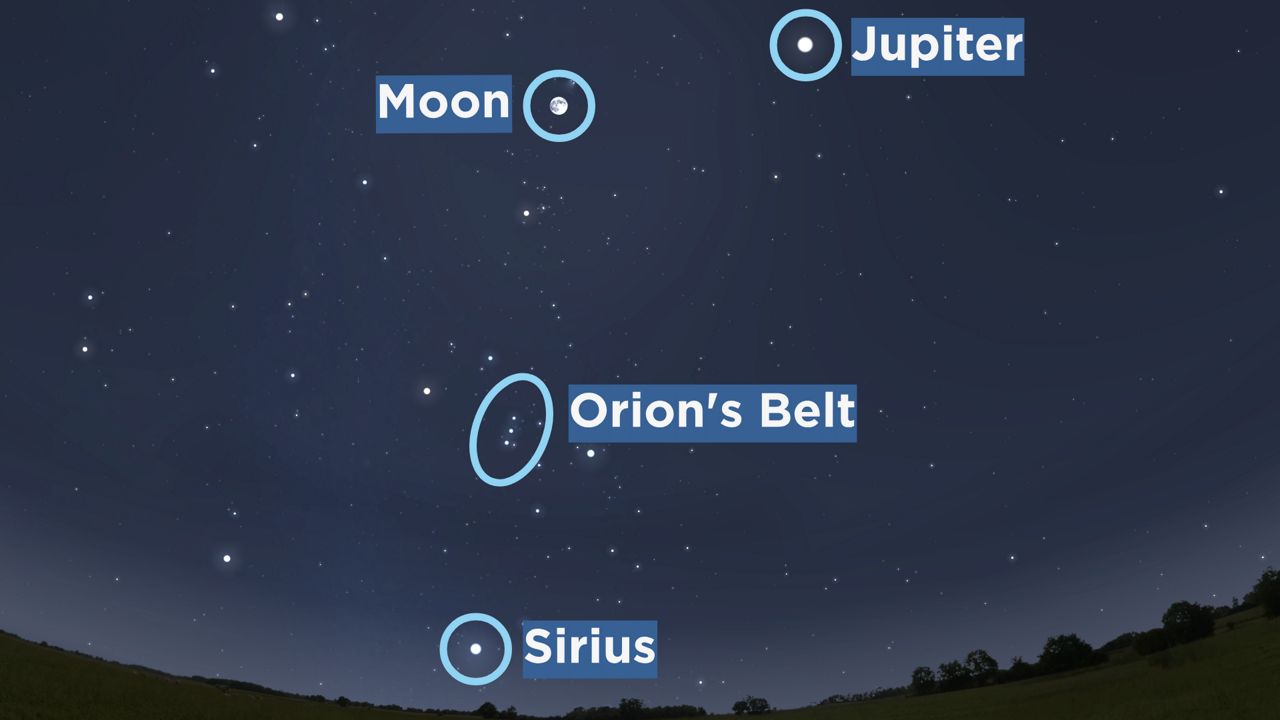Your refrigerator may not be full of Thanksgiving leftovers anymore, but the moon will be full as we start the week.
Sunday night brings the Full Beaver Moon. It’ll be fullest in the early morning hours of Monday at 3:16 a.m. ET.
NASA says this moon probably gets its name from trappers using mid-fall to set beaver traps before swamps freeze, or because beavers become more active as they prepare for winter.
Native American names for this moon include the Freezing Over Moon, They Give Thanks Moon and First Snow Moon–all quite fitting for this time of year.
Just like last month, Jupiter is still near the moon. However, it’s now leading farther ahead, to the moon’s upper-right in the evening and lower-right in the morning.
You can also use the moon to spot Sirius, the brightest star in the night sky. Before midnight, look down from the moon to find the three stars of Orion’s Belt, then follow that same line to see Sirius low on the horizon.
The southeastern sky around 11 p.m. Sunday night. Star and planet sizes are larger than they’ll actually appear compared to the moon. (Adapted from Stellarium)
Closer to dawn, Orion’s Belt will appear left of the moon; again, follow that line to Sirius. Venus also remains a bright point in the eastern sky before dawn.
The year’s almost up, but the night sights continue. That includes the peak of the Geminid meteor shower in mid-December.
Our team of meteorologists dives deep into the science of weather and breaks down timely weather data and information. To view more weather and climate stories, check out our weather blogs section.

